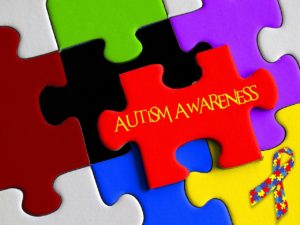Education enriches a person’s life. While it is a life-long process, basic education plays a very important role. By gaining the right skill set, a child can achieve independence easily. This is where Science, Technology, Engineering, Arts and Mathematics (STEAM) Education becomes relevant. Before deciding what to teach, the relevant question is to determine the skillset needed and how it will be used. Educating children and adolescents, in general, is quite a complex process. However, providing STEAM education to autistic children has its own challenges.
Let us take the example of mathematical skills. Imagine that a young child is given a certain amount of money and asked to buy anything of their choice. If we expect them to do this independently then the task must be decomposed into smaller steps, i.e. skills needed: Recognition of currency notes, an understanding of their intrinsic value, walking down the street, greeting the shop keeper and reading the price labels etc.
For a child with Autism Spectrum Disorder (ASD), classic teaching methods that enable other children to make such a purchase may not be effective. Therefore, alternative teaching methods have to be used. All the steps involved for making a purchase are skills that can be combined in groups. For example, strategies formulated for skills such as the recognition of currency notes and understanding their value could be put together in a game where items are given to the child corresponding to the value of the note they present. Basic counting and addition skills are not necessarily needed at this stage. The strategy game teaches a simple exchange of currency notes for a product. Addition / subtraction would only be needed for an advanced level where they would be offered products with values not corresponding to any one currency note. Hence, the child would have to add values of two or more different currency notes in order to receive the product.
As the child grows older, and shows the ability to survive independently, the next step would be to evaluate which of the skills they could use to earn a living. The choice of career would inform the skills required to be included in the curriculum for the child. For example, if pattern recognition and basic mathematical operations are a strong forte then computer programming could be considered as possible avenue for exploration. Sometimes, ordinary activities at an early age, such as stacking toys for toddlers, can prove to be powerful manipulation basics and predictors for advanced programming concepts, such as recessive functions and iterations. The activity of comparing pieces of different sizes, sorting them or arranging in ascending or descending order can be used to provide the concept of lists or arrays in programming. Then multiple stacks can be used to form the classic problem of the “Towers of Hanoi”. Building blocks can be used to develop three-dimensional spatial awareness and understanding of coordinate systems. The teaching strategy used would be, of course, unique for students belonging to different age groups.
When teaching children with special needs, results are not certain. The slightest distraction can quickly become very disturbing. Therefore, the environment should be made as comfortable as possible, with least possible diversions. The lessons sessions should be kept short, with clear and concise instructions. The most important aspect of providing STEAM education to autistic children, albeit very demanding for the educator, is an environment that induces fun and laughter. It is necessary because repetitive activities that are needed to achieve required results can become quite boring sometimes.

An example of an activity where the element of fun could be conducive to learning is to dress up as car mechanics and measure voltage of a car battery using a digital voltmeter. Learning objectives include life skills as well as science education, i.e the ability to start a car as well as use a voltmeter. This activity can then be further extended to recording the voltage on a worksheet, starting the car engine again and recording the second reading. Then compare different readings of battery voltage to learn about the health of the car battery and generator.
Teaching science with the aim of teaching ubiquitous skills, such as inserting batteries in the TV remote correctly, helps in achieving many goals. It enables an autistic person to not only become independent but also gain confidence and self-esteem. This kind of teaching is all about what resources are available, and how the educator can use them to achieve desired results. It is always a collaborative effort between parents, teachers and the students and is often a very rewarding experience for all.
About the author:
Noaman Masoud is an electronics engineer and educator by profession. He also designs and writes for STEAM activities for children of all ages. He specializes in teaching computer programming concepts to children with ASD using toys and physical objects.








